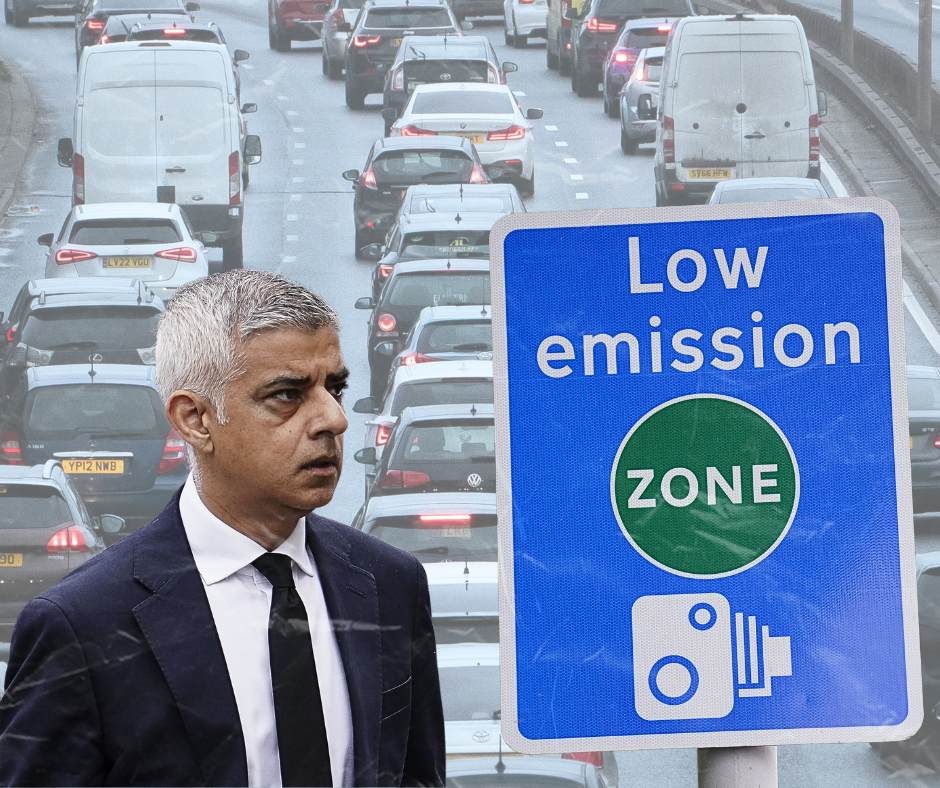ULEZ: What is it and why was it created?
London Mayor Sadiq Khan has annouced the expansion of ULEZ - but what does it really mean and how will it impact people?

London’s Ultra-Low Emission Zone, also known as ULEZ was first introduced in April 2019 and aims to reduce air pollution across the city.
This means that non-compliant vehicles have to pay a fee if they do not meet the ULEZ standards.
Sadiq Khan has announced the expansion of the zone and said that changes will come into effect on 29 August 2023. These changes will operate across all London boroughs.
The expansion has been met with much criticism with Labour citing the widening of the ULEZ scheme to the capital’s suburbs as responsible for Labour narrowly missing out on winning Uxbridge and South Ruislip.
Deputy Labour leader Angela Rayner told BBC Breakfast: “I think one of the things we have to reflect on today is not only the mood against the Tories but also the decision in Uxbridge was related to Ulez.
“The Uxbridge result shows that when you don’t listen to the voters, you don’t win elections.”
However, a source close to Mr Khan said ULEZ was not the reason for the defeat in Uxbridge and South Ruislip. They added: “Winning Uxbridge and South Ruislip was always going to be a struggle for Labour.
“Sadiq has always been clear that expanding the Ulez was a really difficult decision, but necessary to save the lives of young and vulnerable Londoners.”
Here’s everything you need to know about how ULEZ works and what it means.
What does ULEZ mean?
The acronym (ULEZ) stands for Ultra Low Emission Zone and was put forward to help clean the air across the city. ULEZ now operates 24 hours a day, seven days a week, every day of the year (except for Christmas Day).
So far, the zone currently covers all areas within the North and South Circular Roads. The North Circular (A406) and South Circular (A205) roads are not in the zone.
If the vehicle does not meet the ULEZ emission standard and is not exempt, vehicle owners much pat a £12.50 daily charge to drive within the zone.
According to the TFL website, this applies to Cars, motorcycles, vans and specialist vehicles (up to and including 3.5 tonnes) and minibuses (up to and including 5 tonnes).
Lorries, buses, coaches and heavy vans which are non-compliant are charged £100 under the separate low-emission zone scheme, which already covers most of London.
Why do we have ULEZ?
The scheme was put in place to help improve air quality by reducing the number of vehicles in London that don’t meet emission standards.
The TFL website has said the scheme has already helped reduce “harmful nitrogen dioxide pollution by nearly half in central London.”
“94% of vehicles seen driving in the current zone now meet the strict emissions standards on an average day, significantly higher than the 39% in 2017 when the ULEZ was first announced,” it said.
Is ULEZ expanding?
The expansion is set to take place in August and will take up the capital’s borders and include, Hayes, Southall Eirth, Romford and more.
You can find out more by entering your postcode, street name or landmark here.
What is the Low Emission Zone?
The low emission zone (LEZ) was first introduced in 2008 and was set up to discourage heavy diesel vehicles from driving in the city in hopes of bringing in cleaner air.
The LEZ scheme is separate from ULEZ and covers most of Greater London - it is in operation 24 hours a day, every day of the year.
Is my car ULEZ-compliant?
To be ULEZ compliant, petrol cars must meet Euro 4 emissions standards. According to Motorway.co.uk, most petrol cars registered after January 2006 meet these standards.
Petrol cars that meet Euro 5 and 6 are exempt from paying charges.
The website states to be ULEZ compliant diesel cars must meet Euro 6 standards. It adds: “Most diesel cars registered since September 2015 meet these standards, though some earlier models will also be compliant.
“The Euro standards are the European emissions rules brought in to reduce the amount of pollution generated by cars. Specifically, they target nitrogen oxide (NOx), carbon monoxide (CO), hydrocarbons (THC and NMHC) and particulate matter (PM),” it added.
To find out if your vehicle meets emissions and safety standards or if you need to pay a daily charge - you can head onto the TFL website and enter your number plate here.
What support is there for people hit by ULEZ costs?
Mr Khan has introduced the scrappage scheme for Londoners receiving certain low-income or disability benefits schemes.
Applicants who are eligible could receive a payment to scrap their vehicle or choose a lower payment plus one.
Successful applicants could also receive two TFL Annual Bus and Tram passes worth more than the payment alone.
There will now be support for:
• Charities
• London-based small businesses
• Micro businesses
• Londoners receiving child benefits
There are also some exemptions also known as “grace periods” for individuals who are on disability benefits, wheelchair-accessible vehicles as well as minibuses used for community transport.
More details about the scrappage scheme and the full eligibility criteria can be found here.
Earlier this year, Mr Khan said London is still “smothered” in toxic air, which is why the expansion was put in place.
On Twitter, he wrote: “The ULEZ has reduced air pollution by nearly half in central London and more than a fifth in inner London. But outer London is still smothered in toxic air that penetrates our lungs and damages our health.
“That’s why we’re expanding the ULEZ London-wide in August.”
Subscribe to Independent Premium to bookmark this article
Want to bookmark your favourite articles and stories to read or reference later? Start your Independent Premium subscription today.

Join our commenting forum
Join thought-provoking conversations, follow other Independent readers and see their replies